Make Pest Scouting a Priority in 2022
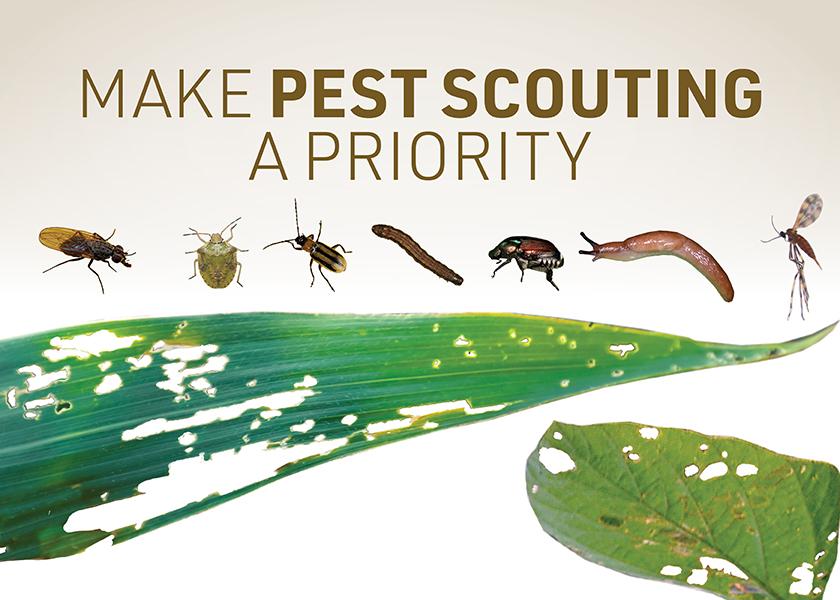
Scouting fields for pest problems is a vital component of crop health and yield outcome. “Yet too many producers don’t rank scouting high enough on their list of priori-ties,” says Ken Ferrie, Farm Journal Field Agronomist. “Don’t let that be the case on your farm. Think about pest control as an investment in protecting your crops.” Mid-west entomologists report these pests invaded fields this year. They encourage farm-ers to monitor for them in 2022 to determine treatment options.

BROWN STINK BUG
- Adult: Broad, flat, shield-shaped bugs that are brown on top with a yellowish underside. About ½" long.
- Nymphs: Look similar to adults but lack wings.
- Eggs: Round, laid in clusters and orange with a ring of white hairlike structures on the top.
- Timing of damage: VE to R3
- Type of damage: Holes in the leaves that are often ringed in yellow. Tillering, wilting and plant death can also occur.
- Scouting: Examine 20 consecutive plants in each of five different locations in the field (100 plants total). Record per-centage of damaged plants and level of infestation.
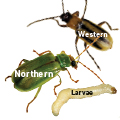
CORN ROOTWORM
(Western and Northern)
- Adult: Western: Small yellow bug with three black stripes on the forewings. Northern: Small bug; color varies from cream to pale green.
- Larvae: Slender, about ½" long and white with a brown head and dark spot on the posterior end.
- Eggs: White, football-shaped and very tiny.
- Timing of damage: V8 to R5
- Type of damage: Larvae feed on and tunnel into roots. Adults feed on and clip corn silks.
- Scouting: For larvae, dig up 10 randomly chosen plants and check soil for rootworms. For adults, count the number of beetles on five plants each in five separate locations.
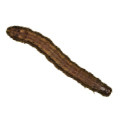
FALL ARMYWORM
- Adult: Gray and brown moth. Forewings are marked with triangular white spots.
- Larvae: Smooth-skinned caterpillar, ranging in color from light tan or green to black with three light yellow stripes down the back and a white inverted “Y” on the front of its brown head.
- Eggs: Dome-shaped with a flattened surface and a rounded point at the tip. Female covers the egg mass with a layer of gray scales.
- Timing of damage: V12 to R6
- Type of damage: Primarily feeding on the leaves and whorl but later larvae will move to the tassel and young ears.
- Scouting: Check for damage on about 20 consecutive plants in five separate locations.
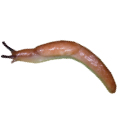
SLUG
- Adult: Slimy, soft-bodied, gray or mottled, legless mollusk.
- Larvae: Like adults but smaller.
- Eggs: Clusters of eight to 60 clear jellylike eggs laid on the ground in sheltered areas.
- Timing of damage: VE to V8
- Type of damage: Ragged holes in leaves or leaves that appear shredded, starting with the lower plant. Look for silvery slime trails on leaves or ground; this is a telltale sign of slugs.
- Scouting: Examine 20 plants in five separate locations. Note the number of damaged plants and estimate the percent-age of defoliation.

SOYBEAN GALL MIDGE
- Adult: Tiny (1/10"), delicate flies with slender bodies, mottled wings, long legs banded with an alternating light and dark color pattern and orange abdomen.
- Larvae: Small and legless maggot-like larvae, clear to white-colored when young, turning bright orange as they ma-ture.
- Timing of damage: V2
- Type of damage: Wilting or dead soybeans along field edges with decreasing damage into the center of the field is usu-ally the first sign of infestation. Look for dark discoloration at the base of the stem. Heavily infested plants eventually wilt and die.
- Scouting: Look for eggs at the base of soybean plants or darkened and swollen soybean stems.
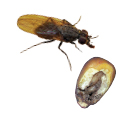
SEEDCORN MAGGOT
- Adult: Small, gray, bristly fly with black legs. It is less than ¼" long.
- Larvae: White to yellow-white maggot with tough skin, pointed head and round tail.
- Eggs: Laid singly or in clusters in moist soil; each female lays an average of 270 eggs.
- Timing of damage: VE to V4
- Type of damage: Maggots burrow into seeds and eat the germs, reducing stands.
- Scouting: Dig up un-germinated seeds and look for maggots.

JAPANESE BEETLE
- Adult: Metallic green beetle with bronze wing covers, about ½" long. Six tufts of white hair on each side of the abdomen just below the wing covers.
- Larvae: Grubs are creamy white with a brown head capsule, C-shaped and about 1" long.
- Eggs: White to translucent, small and elliptical to spherical in shape.
- Timing of damage: VE to R8
- Type of damage: Adults skeletonize leaves. Larvae feed on roots.
- Scouting: Examine five plants in five locations to determine percentage of defoliation.







